These blood orange pavlovas were love at first bite. They're crumbly on the outside, chewy on the inside, and tangy from the blood orange curd. The marshmallow texture of pavlovas is straight out of my dreams. They're such a beautiful looking dessert that I'm itching to make a big pavlova cake version and load it up with fruits come summertime.
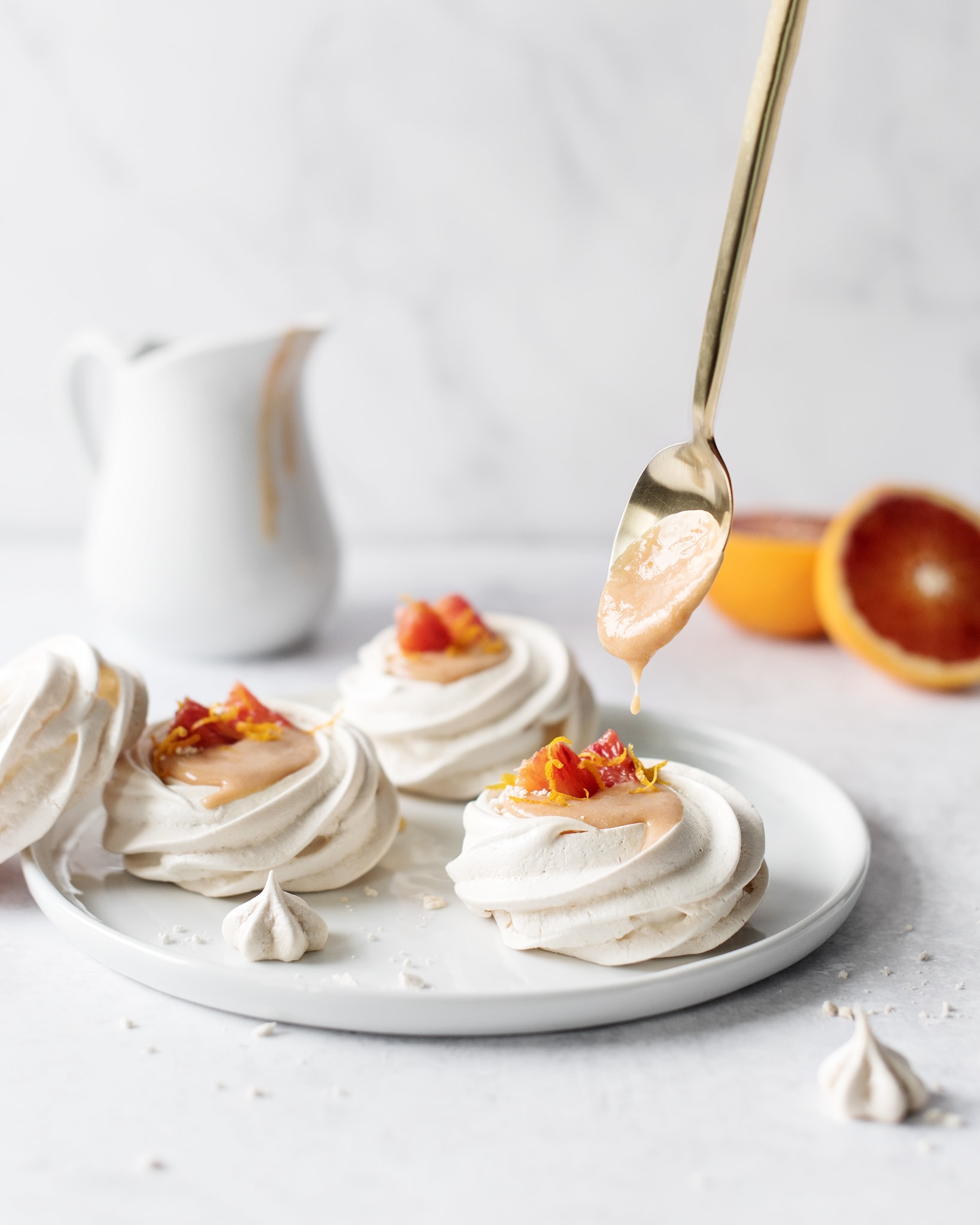
These mini blood orange pavlovas are best eaten right away (I mean, how could you wait? WHY would you even wait?). But if you assemble them with the curd inside and wait until the next day, it becomes a different experience. The pavlovas soak up the moisture from the curd and almost disintegrates when it touches your mouth. It literally melts in your mouth. If you're into that, then the leftovers the next day will be perfect.
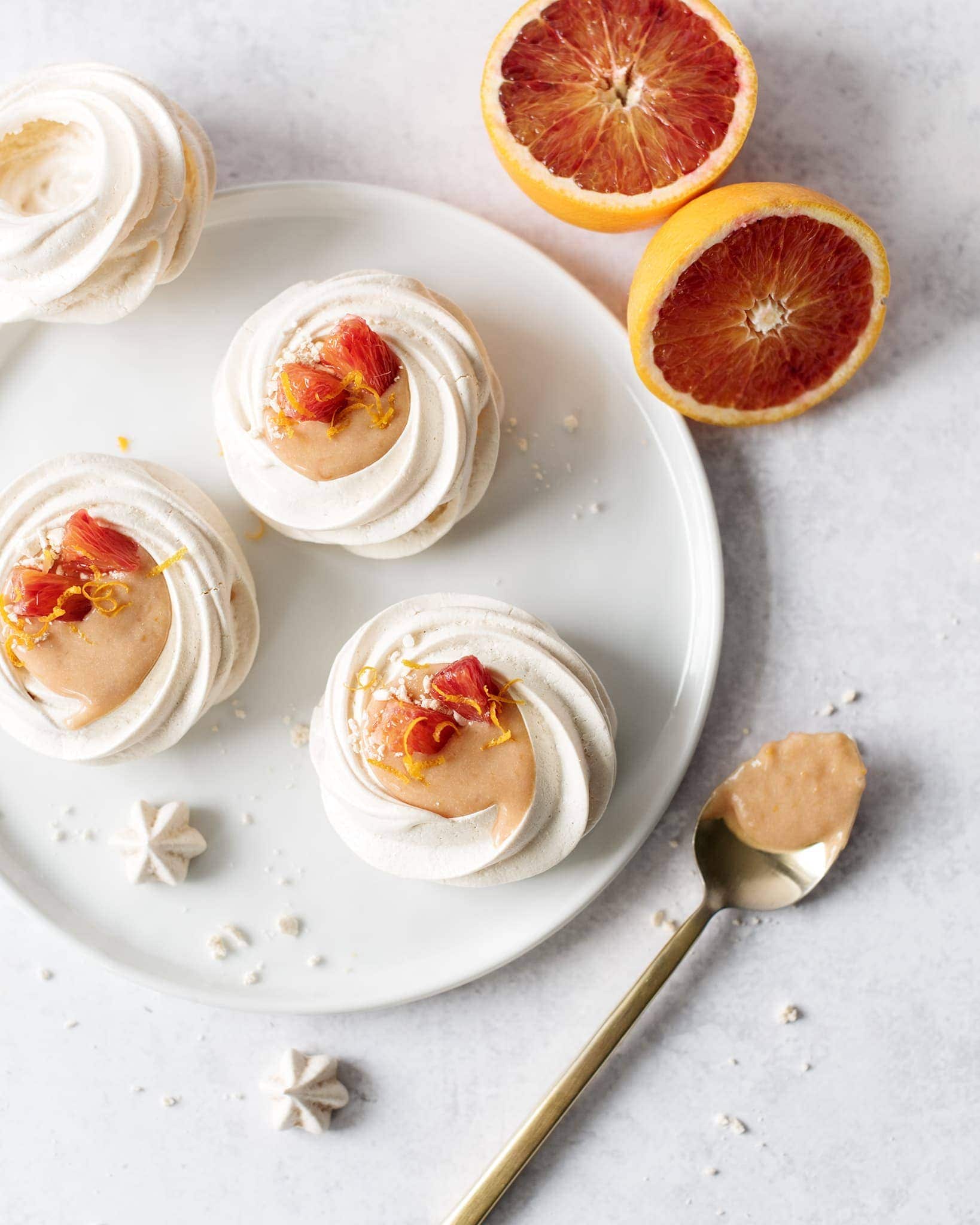
PAVLOVAS VS. MERINGUES
Pavlovas are essentially made the same way as meringues but while meringues are usually crunchy all the way through, pavlovas have the same crunchy texture on the outside but a soft and marshmallowy inside. The chewy center is achieved by the addition of cornstarch and white vinegar to the meringue. Meringues are most often enjoyed like cookies while pavlovas serve as a base for fresh fruits, whipped cream, and/or syrups.
HOW TO MAKE PAVLOVAS
To make these pavlovas, use a handheld mixer or stand mixer to whisk egg whites until the whisk leaves "trails" in the egg whites. It should be a little firm but not yet soft or stiff peaks.
Add the sugar one tablespoonful at a time, mixing continuously, until the sugar has time to dissolve before adding the next spoonful. I like to count about 10-15 seconds between each addition of sugar.
The meringue should slowly become stiff peaks. When you pull the mixer out of the meringue, the points should be stiff and flop over just slightly. Stop at this point and rub a bit of meringue in between your thumb and index finger. The meringue should feel smooth and glossy, with no graininess from the sugar.
Gently sprinkle cornstarch, vanilla extract, and white vinegar onto the meringue. Use a rubber spatula to fold it all together until combined. This should take about 10 folds. It's combined when you don't see anymore streaks of vanilla or cornstarch.
Transfer the meringue to a piping bag fitted with a piping tip. I used a closed star tip for these. Pipe flat 3 to 4-inch circle, starting from the middle, and pipe a ring on top of the edge of the circle to create the "walls" of the pavlova. You will have an empty space or "bowl" in the middle where the blood orange curd will go later.
Place the baking sheet in an oven preheated to 350ºF. Immediately after putting the pavlovas inside, lower the oven temperature to 300ºF. Bake for 30 minutes. Then, turn off the oven and let the pavlovas continue baking while the temperature drops for another 30 minutes. Depending on how big your pavlovas are, you might need to adjust the timing to keep the middles of the pavlovas soft and chewy. They are done once they peel cleanly off the parchment paper and the surface is dry and set. You can open the oven door early and let them cool down with the door cracked open.
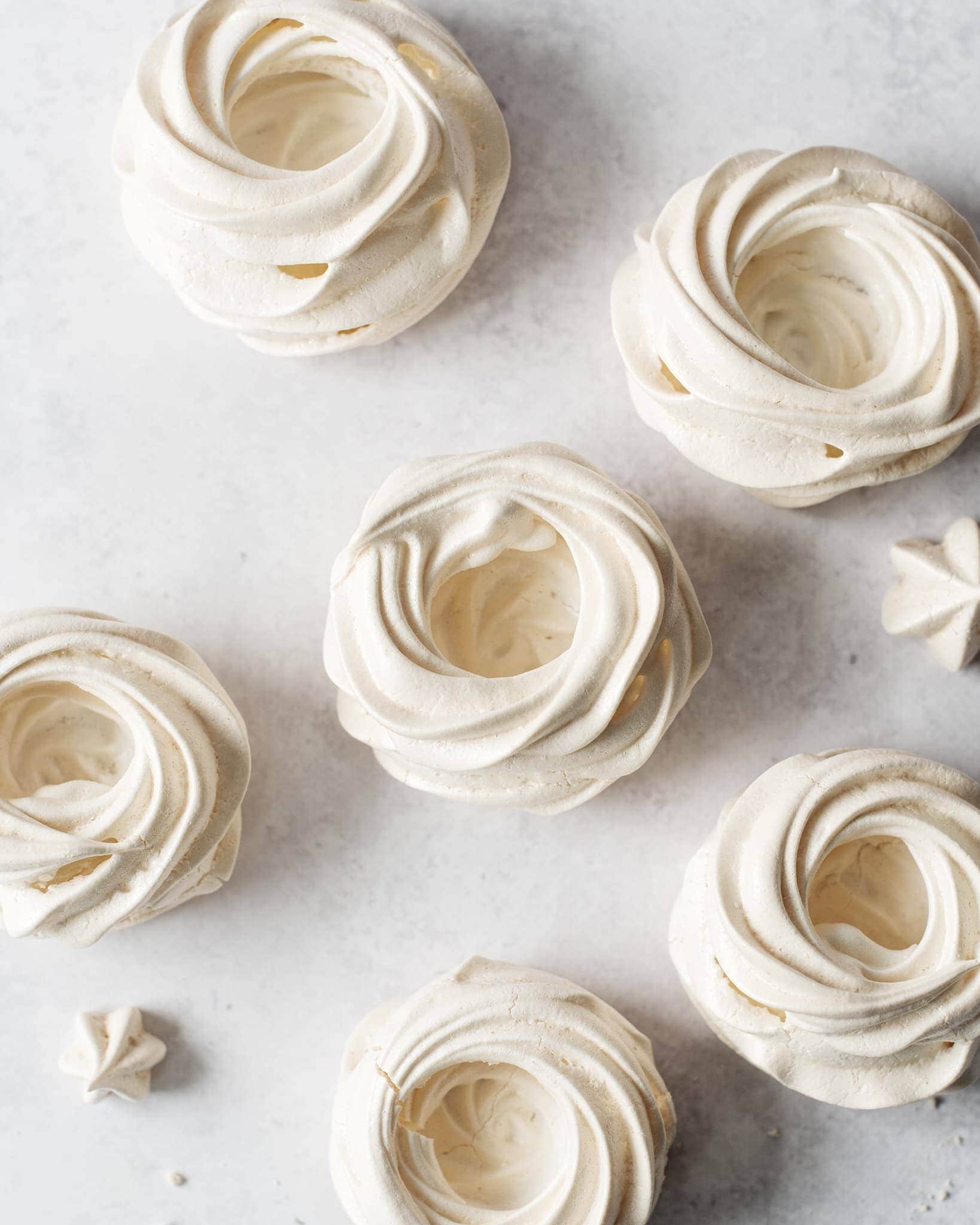
HOW TO MAKE BLOOD ORANGE CURD
Curds are a great way to enjoy fresh fruits in a fun, decadent way. All you need is the juice and zest of blood oranges.
Tip: U
Add the egg yolks, sugar, blood orange juice and zest in a small pot on medium-high heat. Keep stirring the mixture constantly and vigorously otherwise you'll end up with scrambled eggs. Cook the curd until it thickens and becomes slightly jelly-like.
At this point, remove it from the heat and stir in the butter, one small piece at a time. The consistency is right when you can drag a spatula down the middle of the curd, see the bottom of the pot, and the curd on either side takes about 1-2 seconds to come back together.
To get a super smooth blood orange curd, you can blend it with a handheld immersion blender or press it through a sieve. I skipped this step (because lazy) and it turned out just fine. There will just be some pieces of blood orange zest remaining in the curd.
Transfer the curd to a small bowl and press a piece of plastic wrap directly onto the surface of the curd to prevent a skin from forming on the surface as it cools. Once cooled, spoon into the pavlovas or store in the fridge for up to 2-3 days.
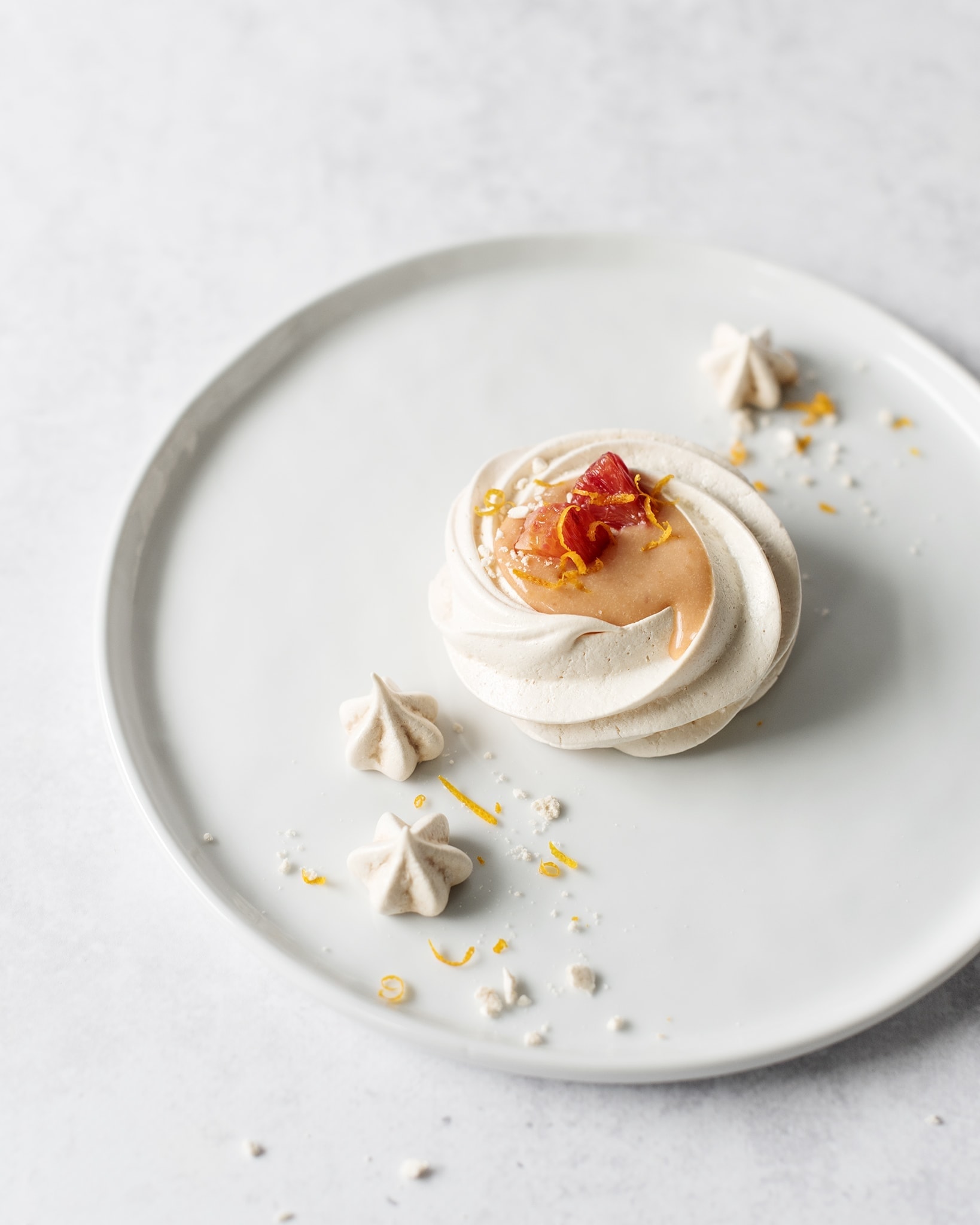
OTHER BLOOD ORANGE & MERINGUE RECIPES
Recipe
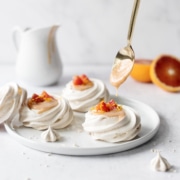
Blood Orange Pavlovas
Ingredients
Pavlovas
- 4 large egg whites
- ¼ teaspoon salt
- 250 g granulated sugar
- 2 teaspoon cornstarch
- 1 teaspoon vanilla extract
- 1 teaspoon white vinegar
Blood Orange Curd
- 3 large egg yolks
- 60 g granulated sugar
- 80 g blood orange juice, freshly squeezed
- zest of one blood orange
- 80 g unsalted butter, softened & cubed
Instructions
Pavlovas
- Preheat oven to 350ºF.
- With an electric mixer or stand mixer, whisk egg whites with salt until the whisk leaves "trails" in the mixture.
- Slowly add in sugar, one tablespoon at a time, while beating for at least 10-15 seconds after each addition until all the sugar is dissolved.
- Stop beating when the meringue reaches stiff peaks. Rub a bit of meringue in between your thumb and index finger - it should feel smooth without being gritty.
- Sprinkle cornstarch, vanilla, and vinegar onto meringue and fold with a rubber spatula until combined.
- Transfer meringue into a piping bag fitted with a closed star tip.
- On a baking sheet lined with parchment paper, pipe a filled-in circle for the base of the pavlova. Pipe a ring on top of the outer edge of the circle to create the "walls" of the pavlova and an empty space in the middle for the filling.
- Put the baking sheet in the oven and immediately turn oven down to 300ºF. Bake pavlovas for 30 minutes.
- Turn off the oven and leave them in the oven for another 30 minutes until they peel cleanly off the parchment paper.
- Set aside to cool completely. Fill with blood orange curd just before serving.
Blood Orange Curd:
- In a small pot, add egg yolks, sugar, blood orange zest, and blood orange juice.
- Cook on medium-high heat while stirring constantly until it thickens enough to coat the back of a spoon or is a jelly-like consistency, about 3-4 minutes. Stir vigorously to prevent getting scrambled eggs!
- Remove from heat.
- Stir in butter, one cube at a time, dissolving the previous cube of butter before adding the next until all the butter is incorporated. You should be able to "cut" through the curd with a spatula and the two sides of curd take about 1-2 seconds to come back together.
- Transfer curd to a small bowl and press plastic wrap directly onto the surface of the curd to prevent a skin from forming.
- Let cool completely before spooning into pavlovas. Top with slices of fresh blood orange and a sprinkle of blood orange zest.

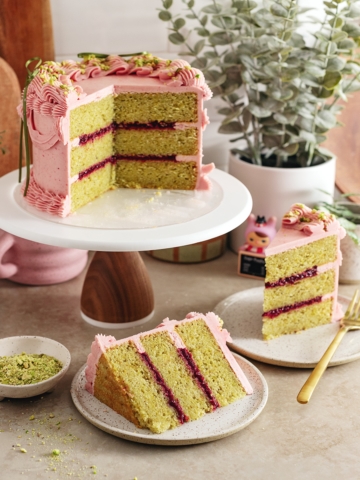
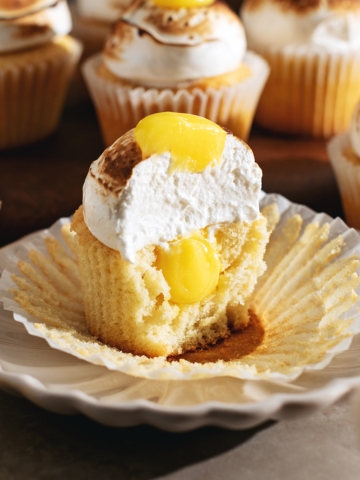
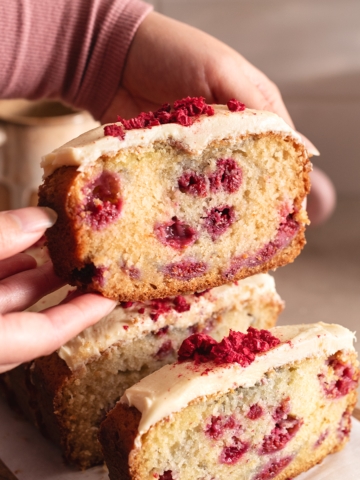
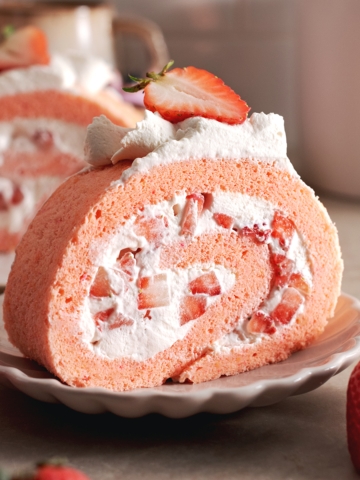
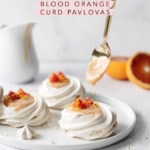
Leave a comment or review